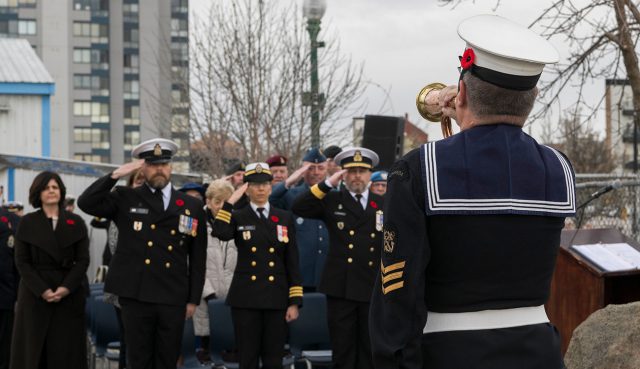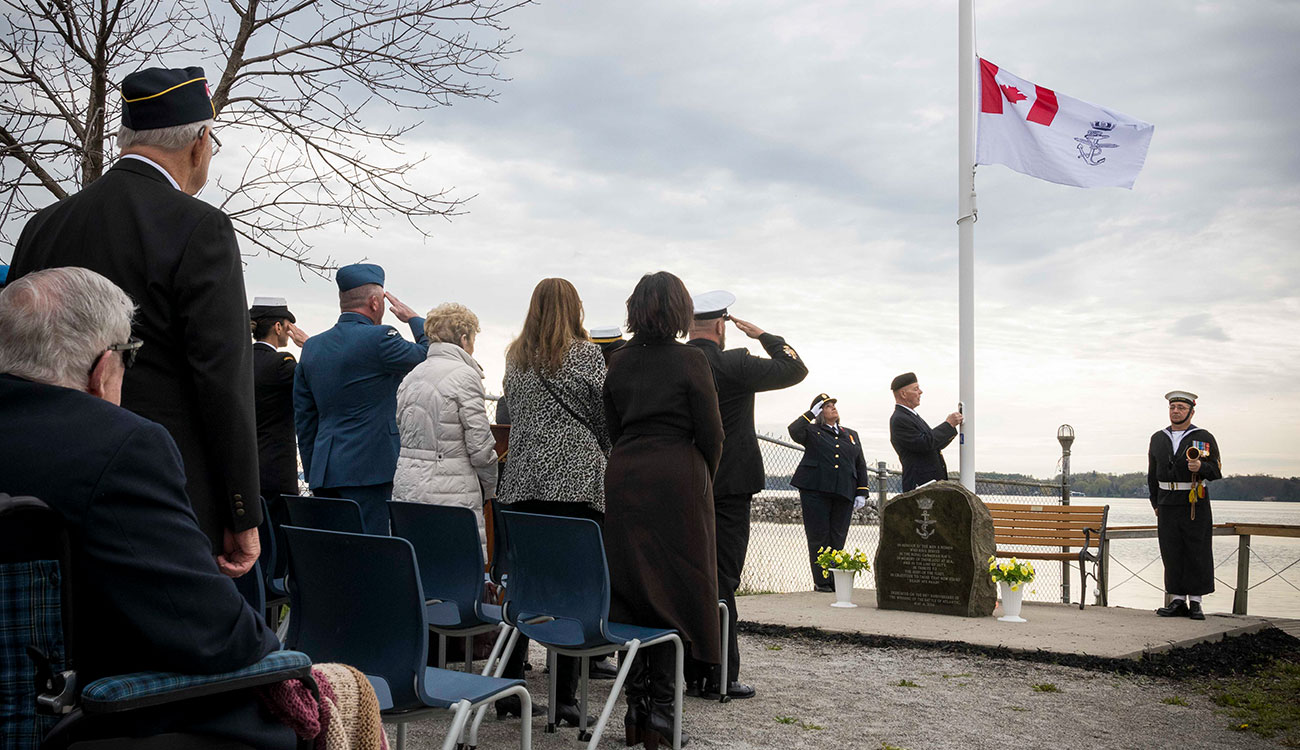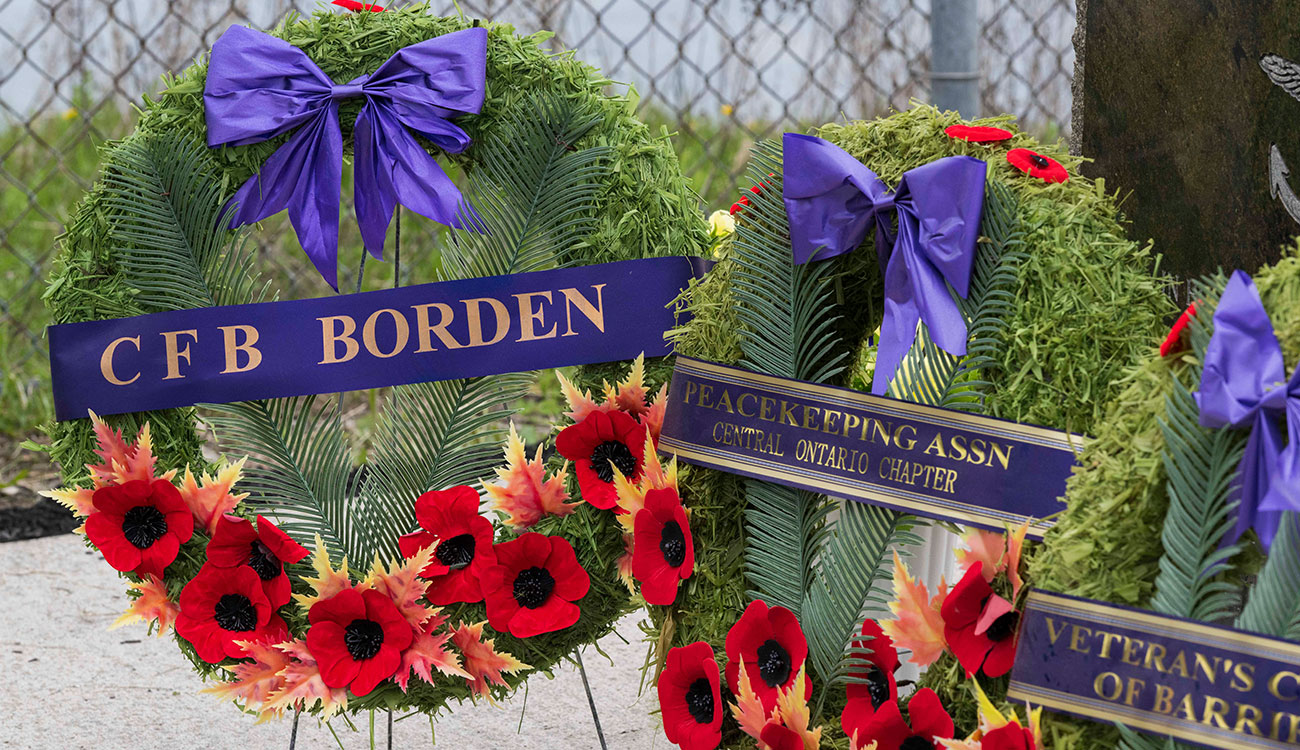
4,600 Canadians lost their lives during the Battle of the Atlantic, the longest continuous battle of the Second World War. On the morning of 7 May, a ceremony was held at the Naval Memorial in Barrie, Ont. to remember the veterans and merchant mariners who served during this battle, their families, and the sacrifice of those who never returned home.
Control of the Atlantic Ocean was vital to the war effort. Without it, North America was effectively cut off from providing troops and supplies to the Allies. Beginning at the onset of the Second World War in September 1939, the Battle of the Atlantic continued steadily until May 1945, during which time Allied ships were at constant risk of being sunk by German submarines and warships.

The losses were great. Between January and July 1942 alone, almost 400 Allied ships sank to the bottom of the Atlantic. One out of seven Merchant Navy Sailors was either killed or wounded, making it the highest casualty rate for Canadians of any battle in the Second World War. Of the 2,000 Royal Canadian Naval Service members who lost their lives during the war, most of them died fighting the Battle of the Atlantic.
Casualties extended beyond serving members as well. With busy ports in Canada’s East Coast cities, the battle extending as close as the St. Lawrence River and the SS Caribou, a passenger ferry travelling from Nova Scotia to Newfoundland, was sunk, resulting in 136 civilian deaths.
Members of the Royal Canadian Navy, the Canadian Merchant Navy, the Women’s Royal Canadian Naval Service, and the Royal Canadian Air Force were part of the fight. In 1943, the Allied air and naval forces of the Northwest Atlantic were put under the charge of Rear Admiral Leonard Murray, making it the only theatre of war in the Second World War to be commanded by a Canadian.

The tides turned in favour of the Allies eventually, thanks to improved tactics and technology such as radar and long-range planes (the aircraft providing extra protection to Allied ships at the onset of the war couldn’t travel all the way across the Atlantic Ocean). Canada’s Navy also saw extreme growth during this time, going from a fleet of six ships and 3,500 personnel to 434 commissioned vessels and 95,000 serving members.
The efforts and sacrifice of the Canadians who served played a critical role in the Allied victory, both in the Battle of the Atlantic and the Second World War.





